EmbracingSound Technology
About Technology
The Philosophy
The lowest common denominator for all sound reproduction systems are the signal that is feed to it. It is a common misconception that speakers should "create" the spatial impression by its speaker positions or by reflecting sound with the aid of the room boundaries to make a huge impression or to enhance the signal so it delivers an experience based on the reproduction system no matter what the actual recording sounds like.
The philosophy behind the EmbracingSound technology is to deliver a sound experience that always is as true to the interchannel relations of the actual recording or movie as possible.
The technology has had two major refinements in 2003 and 2006 and is constantly under development to provide an even better reproduction of the spatial information from all kinds of recordings for you to experience.
The application areas are also developing to meet the demands of our present and future customers, all this with the same philosophy as our guiding light.
Versions of the technology
The technology is provided in four packages, all with different features suitable for different products:

The core version of the technology that for large speakers are the golden reference of the technology."

Utilizing an array of four or more even pairs of speakers, making the technology suitable for soundbar applications.

Utilizing an array of six or more even pairs of speakers, EmbracingSound Theatre-HD further adds the capability of discrete 5.1 or 7.1 input for better definition of the surround content.

Targeted for sound for picture applications bundled with or included in TV and monitor applications, any combination of 2.0 to 5.1 inputs and 2, 4, or 6 speaker outputs can be combined. This package also include a Dynamic Loudness to make the sound full also at lower listening levels, as well as a Basic Speaker Correction addressing the basic physics of the speaker driver to improve performance.
What is Stereo?
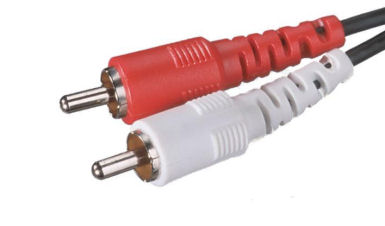
There is more to stereo than Left and Right. The word stereo comes from the Greek word meaning solid, which implies the three dimensions height, width, and depth - spatial sound in other words.
The Electrical Signal
The lowest common denominator
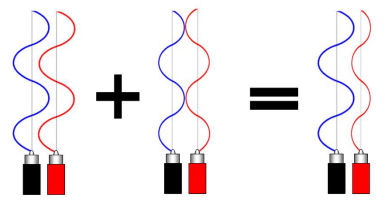
The most common spatial information is conveyed by two channels (ordinary stereo).
This is defined by a Left and a Right signal that are partly identical and partly different.
The Dimensions

The identical part of the audio signal describes the depth of the recording.

The differences describe the width of the recording.

The identical part and the differences describe a common surface area.
Traditional thinking:
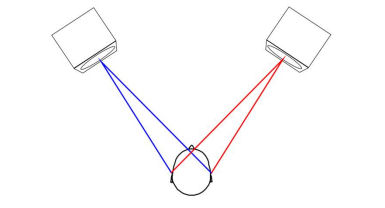
Traditional thinking of spatial sound reproduction includes
two or more separate loudspeakers that are localized by the listener.
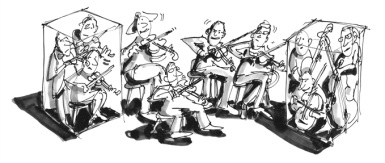
The spatial audio signal is then reproduced on top of these pre-determined positions of the separate speakers.
For those who are interested, the most acknowledged theory around this shows the math,
valid up to 700Hz, to be as follows:
(ref: Clark et al. 1958 further analyzed by Bauer 1961, Bennett et al. 1985, Lipshitz 1986, among others).
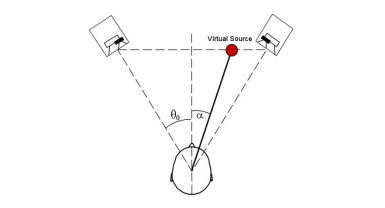


With this background it is clear that the directional information in the recording is never true to the perceived angle of the virtual sound source accept for when a Left only and/or Right only signal is to be reproduced.
All other directional information in the recording is smeared by the physical loudspeaker placement.
The more dominant the L+R signal gets the worse the smearing. This results in a sound image that produces broad mono. Some enhancement technologies even strive to introduce this kind of distortion to the sound image to mimic the flaws in the traditional thinking.
The more dominant the L+R signal gets the worse the smearing. This results in a sound image that produces broad mono. Some enhancement technologies even strive to introduce this kind of distortion to the sound image to mimic the flaws in the traditional thinking.
Thinking different
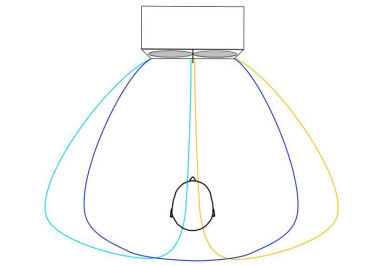
EmbracingSound® technology utilizes a Single Speaker Array unit placed in front of the listener with two or any higher even number of drivers. This makes it possible to reproduce the spatial information without any pre-determined positions of separate speakers.
Getting the Signal in Shape

The target of the technology is to make the spatial information from the recording to appear to the listeners hearing sense as truthfully as possible to the audio signal. The proprietary EmbracingSound algorithm restores the inter channel relationships reproduced by the speaker array in a way that is tailor suited to the human (mammal) localization of sound. Opposed to common virtualization technologies EmbracingSound reproduces a high resolution soundstage and provides at the same time the highest sound quality possible. To make this happen the audio signal needs to be adapted to the speaker configuration.
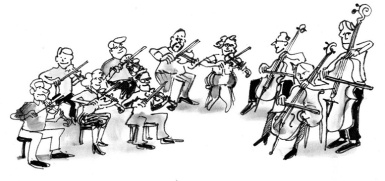
You will experience exactly what is in the recording... just as it was recorded with width, depth, and height in front of you.
...and beyond...
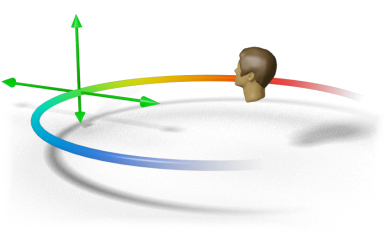
If a Pro Logic signal or a down mix from 5.1 is used with the EmbracingSound® technology the listener experiences an envelopment of sound that resembles the true movie theatre experience.
If EmbracingSound Theatre-HD is used, the surround content can fully reproduce a 5.1 or 7.1 experience as the channels are fed discrete to the EmbracingSound theatre-HD algorithm
This is why we call it EmbracingSound®
Technical Design
The EmbracingSound® technology comprises;
- The speaker array configuration,
- The EmbracingSound algorithm and,
- The plate element called "the nose".
For those who are interested in the math behind, it is as follows and is valid up to 4kHz:
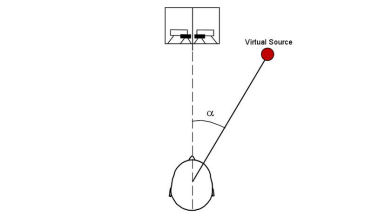


This shows that a sound image up to ±90° can be reproduced and this is solely the result of the spatial information contained in the recording. There are no angular differences between the perceived source and the signal state feed to the input of the compensation circuitry. For those who are interested to read further please click on DOWNLOADS and download the available technical documents.
